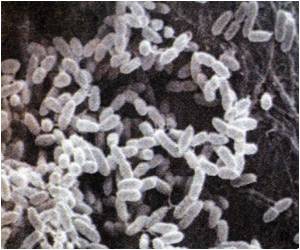Salmonella, E coli O157:H7, and Listeria monocytogenes are the bacterial pathogens of greatest concern that cause foodborne illness.

Foodborne illness is a toxic or infectious ailment that comes from eating contaminated food. The symptoms are mainly flu-like that include nausea, vomiting, diarrhea, and/ or fever and the onset of symptoms may occur within minutes to weeks. Pathogenic bacteria, virus or parasites cause these illnesses.
Who is at risk? Everyone is at risk for getting foodborne illness, but children below the age of 5, older adults, pregnant women and people with weakened immune system such as those with HIV, cancer, diabetes or those who got a transplant are at higher risk of infection.
The CDC (Center for Disease Control and Prevention), the FDA, along with other health departments have tracked seven bacterial pathogens – Salmonella, Escherichia coli (E. coli), Listeria, Campylobacter, Shigella, Yersinia, and Vibrio – to be the causal organisms of this illness. Although animals are the source of most of these pathogens, researchers found that foodborne illness associated with fresh produce such as lettuce, spinach, tomatoes, sprouts, cantaloupes and melons, is on the rise. In fact, in 2011, one of the deadliest known listeriosis outbreaks in the U.S. was associated with cantaloupes from a farm in Colorado.
The bacterial pathogens of greatest concern are Salmonella, E coli (mainly O157:H7), and Listeria monocytogenes (L monocytogenes), says Prof. Kimberly Welch, Assistant Professor in Nesbitt College of Pharmacy and Nursing, Wilkes University, Pennsylvania in her article on update on foodborne illness. The article has been published in the U.S. Pharmacist journal.
Salmonella species -
• Salmonella is spread through contaminated water and via fecal-oral route causing either non-typhoidal or typhoidal salmonellosis.
• Occur within 72 hours of exposure and last for 4 to 7 days.
• Treatment may require antibiotics viz. ceftriaxone or azithromycin in children and a fluoroquinolone (commonly levofloxacin) or azithromycin in adults.
• Other treatments include rehydration therapy, salt intake through diet and digestible diet preferably BRAT (banana, rice, applesauce and toast).
E. coli O157 -
• Although E. coli is usually harmless, E. coli O157 can cause bloody diarrhea in the host.
• The pathogen is associated with undercooked beef and beef products and fresh produce such as spinach, romaine lettuce, hazelnuts, and clover sprouts.
• Symptoms include severe abdominal cramping, nausea, vomiting, and diarrhea that changes from watery to bloody.
• Life threatening complications include hemolytic uremic syndrome (HUS) which causes acute kidney failure and thrombotic thrombocytopenia purpura (blood disorder that causes increased blood clots and leads to a low platelet count).
• Antibiotics and antimotility drugs such as loperamide increase the risk of HUS, so treatment involves rehydration and reducing risk of complications.
L. monocytogenes -
• The pathogen causes listeriosis and is associated with unpasteurized milk and milk products (e.g., soft cheeses), meats, hot dogs, raw produce, and seafood.
• The disease occurs within 3 days and may last from a few days to weeks.
• Symptoms similar to diarrheal ailments and includes fever, muscle aches, and nausea or diarrhea.
• Listeriosis can cause severe problems with pregnancy, including miscarriage or death in newborns.
• Severe cases can cause complications such as septicemia and meningitis.
• Treatment includes rehydration therapy and ampicillin (trimethoprim-sulfamethoxazole if allergic to penicillin), for 3 to 6 weeks.
Preventive measures include -
• Proper food storage, refrigeration, handling, and cooking.
• Avoiding unpasteurized milk and milk products and raw or undercooked meat and poultry.
• Eating more meals at home.
• Washing raw fruits and vegetables under running water.
• Throwing away produce that has been improperly stored or that may have been in contact with raw meat, poultry, or seafood.
• Cooking fish and fresh meats at 145 degree F and ground meat at 165 degree F.
• Washing hands thoroughly before and after eating.
• Reducing cross-contamination by using a separate cutting board and utensils for raw and fresh foods and frequently disinfecting kitchen surfaces.
Prof Welch concludes - ‘Pharmacists can help identify individuals who may be at high risk for foodborne illness, educate patients about how to prevent foodborne illness, make recommendations for self-care, and report incidences of foodborne illness to the local health department and the CDC.’
Source-Medindia














